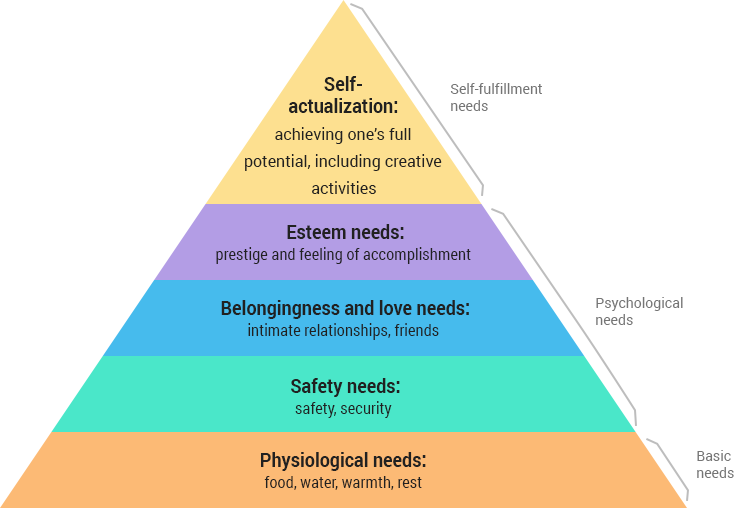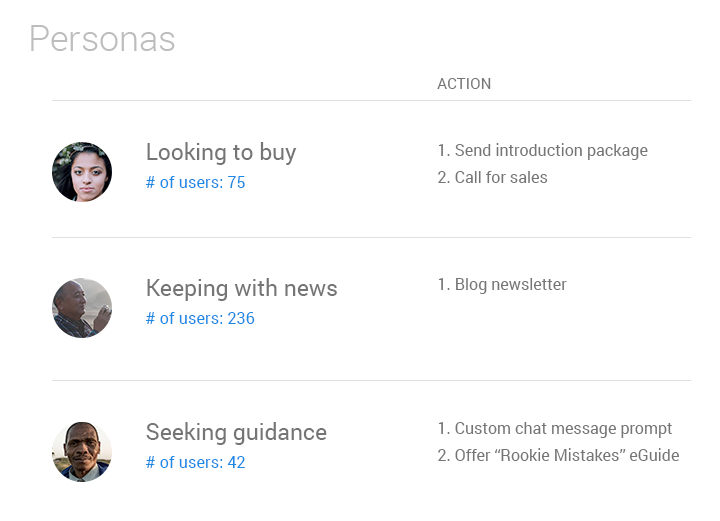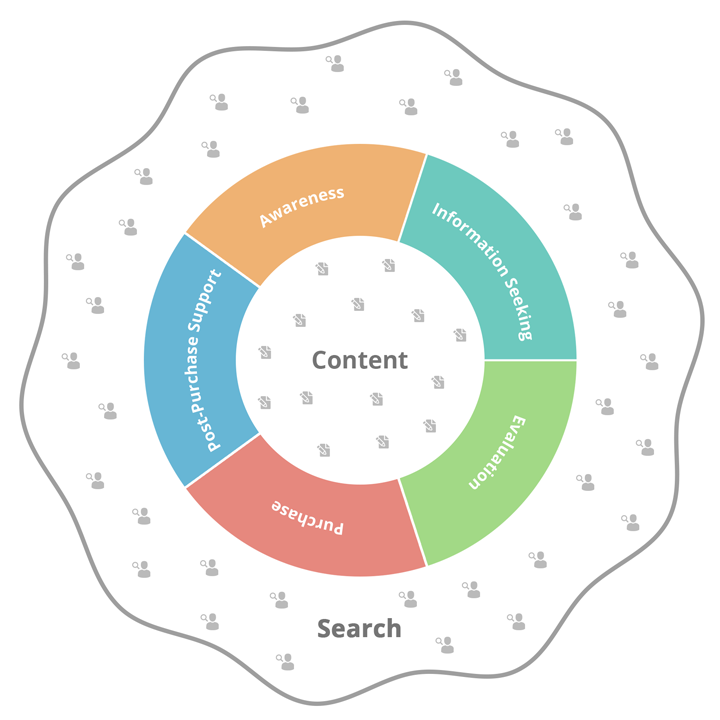
Why Craft Dynamic Personalized and Customized Content?
by Mark Hawks June 14th, 2017
Personalization. Customization. You’re probably familiar with these industry buzzwords—but what’s behind them? Why are so many content marketers shifting their strategy toward such trends? Consider these statistics:
- 77% of consumers have chosen, paid more for, or recommended a brand that offers a personalized experience. 1
- 56% of marketers believe personalized content promotes engagement rates and boosts brand recall. 2
- 78% of chief marketing officers believe custom content is the future of marketing.
- Nearly 49% of marketers are learning to drive content to align with customers’ journeys. 3
- 63% of marketers create content by buyer persona. 4
Customers want personalized online experiences. Brands are giving them what they want in the form of customized content. Companies large and small are providing value to their customers: walking them through how to repair broken washing machines; teaching them how to grill better steaks; inspiring them to live healthier lives. Each and every one of these positive experiences can strengthen brands’ relationships with customers and lead to greater loyalty.
The benefits of creating customized content are clear, but what about the process? Giving customers these tailored experiences requires first understanding them—their needs, desires, and pain points. Customers’ needs aren’t static, so it’s also necessary to chart them as they shift with each brand interaction and produce supportive content.
Thankfully, traditional marketers have laid some of the groundwork for understanding and accommodating customers’ shifting need states. Outlined in this article are some considerations, tools, and a model for crafting customized content.
The Power of Emotional Triggers
People communicate emotions before they learn how to articulate them with words. At just six weeks old, babies smile at their mothers to show love. This “social smile” is a person’s first emotional action in life. It makes sense, then, that people feel first and think second. In fact, studies show that advertising campaigns with purely emotional content perform twice as well as their rational counterparts.
Think about it. If you wanted to learn to play guitar to join a band, which ad would appeal more to you? One that pans from a video of someone excitedly learning the instrument to that same person ecstatically playing on stage at a rock concert; or a static image of a classroom with a marketing message proclaiming the music school to be “the best”?
Effective content triggers emotional reactions.
Physical and Psychological Motivators
A combination of emotions and physiological and psychological needs motivate people to purchase products and services. We eat to satisfy hunger, make friends to feel that we belong, and cultivate careers to strengthen self-esteem. People generally need to fulfill biological and safety needs before they can pursue psychological ones: socializing, self-esteem, and self-actualization.
American psychologist Abraham Maslow first proposed the theory of a hierarchy of needs in the 1940s. Since then, the concept has been used extensively in marketing psychology. For example, guitar lessons would appeal to people in the self-esteem stage if you convinced them they could develop skills their peers would praise.

Personas
Human motivation, however, is nuanced and cannot be completely explained by Maslow’s theory. Social, economic, cultural, demographic, and geographic factors can shape the values, attitudes, and beliefs that influence an individual’s actions.
How do marketers account for all of potential customers’ needs and motivations? They use consumer data to create composite characters called personas that represent their target market(s).
Personas are a tool that helps marketers make inferences on who their customers are and what they want and need. Equipped with this knowledge, marketers can create content that speaks to their customers’ specific situations. Such customized content allows marketers to play more pivotal roles in their customers’ lives because they’re providing value. See our “Guide to Building Personas.”

Search Cycle
Marketers use personas and a model called the search cycle to map how customers’ needs change throughout their journey from becoming aware of a need to fulfilling it with a brand’s product or service. The search cycle is the series of need states a person typically has online before—and even after—becoming your customer. Below is an example of the search cycle and the types of content you would create for each phase.

Awareness
Marketing messages, personal observation, or other influences cause the customer to perceive a problem or need. For example, a commercial for a music school sparks a desire in the customer to learn to play guitar.
Content Types: Resource pages, beginner’s guide and getting started articles.
Information Seeking
The customer conducts online searches and finds articles about the various options for learning guitar: instructional books and videos; online courses; and in-person guitar lessons.
Content Types: Video, eGuides, eBooks, and whitepapers.
Evaluation
The customer opts for in-person guitar lessons and uses local schools’ websites to compare their offerings. He or she also reads online reviews to check their reputation among the community. Sixty-one percent of customers read online reviews before converting.
Content Types: Reviews, brand comparisons, and service or product literature.
Purchase
Emotional or logical inclinations, or both, help the customer develop a preference for one school over the others. After a visit to the physical location to meet the staff and facility, the customer signs up for lessons.
Content Types: User-friendly signup webpages or simple digital shopping carts.
Post-Purchase Support
Happy with the lessons, the customer writes positive reviews on Yelp and refers friends to the school. Studies show that customers tell three people when they’re satisfied with a product and nine when they’re not. Since cognitive dissonance in the form of post-purchase anxiety is common, businesses should provide continued customer support to confirm that the purchase was a “good” decision.
Content Types: Customer support pages and services, follow-up emails, and monthly newsletters to stay connected.
Before investing the resources to develop new content for each stage, be sure to audit what you already have. Some pages may simply need to be refocused with new titles and headings, while others could take more reworking. For an in-depth guide to content auditing, check out this SlideShare by HubSpot.
Psychological Considerations for Crafting Custom Content
You know what type of information customers need along the search cycle, but how do you tailor it to your target audience? Start by creating a persona to represent that audience. Using our guitar lessons example, you might name your persona Jamming Jeff. Next explore his potential experiences and emotions during each stage, writing content that speaks to both.
Experience: What actions, motivations, questions, and barriers accompany each phase of the search cycle? For example, does Jamming Jeff want to learn electric guitar so he can join a rock band? If so, the school should include testimonials from students who’ve become rock musicians after taking lessons. Is cost a barrier for him? The school could highlight its easy payment options. When you have an idea about your target audience’s specific concerns, you can address them in your content.
Emotions: Emotions can serve as a powerful tool in content marketing. Our emotional brain processes sensory information in one-fifth the time that our cognitive brain does, so emotional content can quickly engage audiences. Moreover, emotions can drive desired consumer actions. For example, we’re more likely to share content that elicits feelings of happiness, amusement, and excitement on social media. Surprisingly, content that scares us can foster brand loyalty.
The Value of Personalized Content
Personalized content can help marketers connect with their target audience because it speaks to customers’ specific situations. Taking the time to understand a customer is the first step toward building a lasting relationship with them. It allows you to provide value in their lives with your content—and eventually your products or services. The audience research outlined in this article is an essential element of any successful content marketing strategy.
Additional Sources:
1 – https://blogs.adobe.com/digitalmarketing/personalization/programmatic-advertising-wins-big-personalization/
2 – http://contentmarketinginstitute.com/2016/08/content-marketing-stats/
3 – http://neilpatel.com/2016/01/21/38-content-marketing-stats-that-every-marketer-needs-to-know/
4 – http://www.curata.com/blog/content-marketing-statistics-the-ultimate-list/







